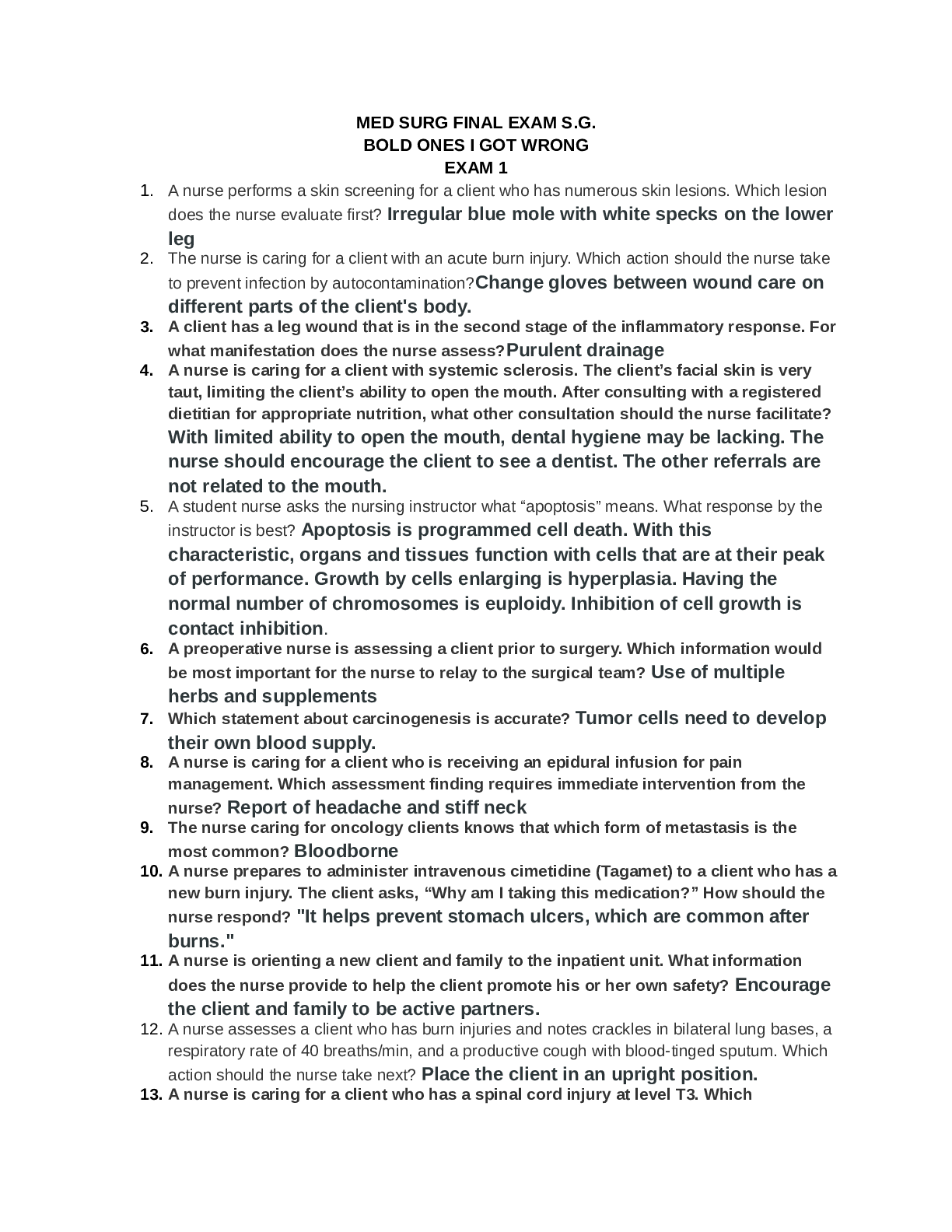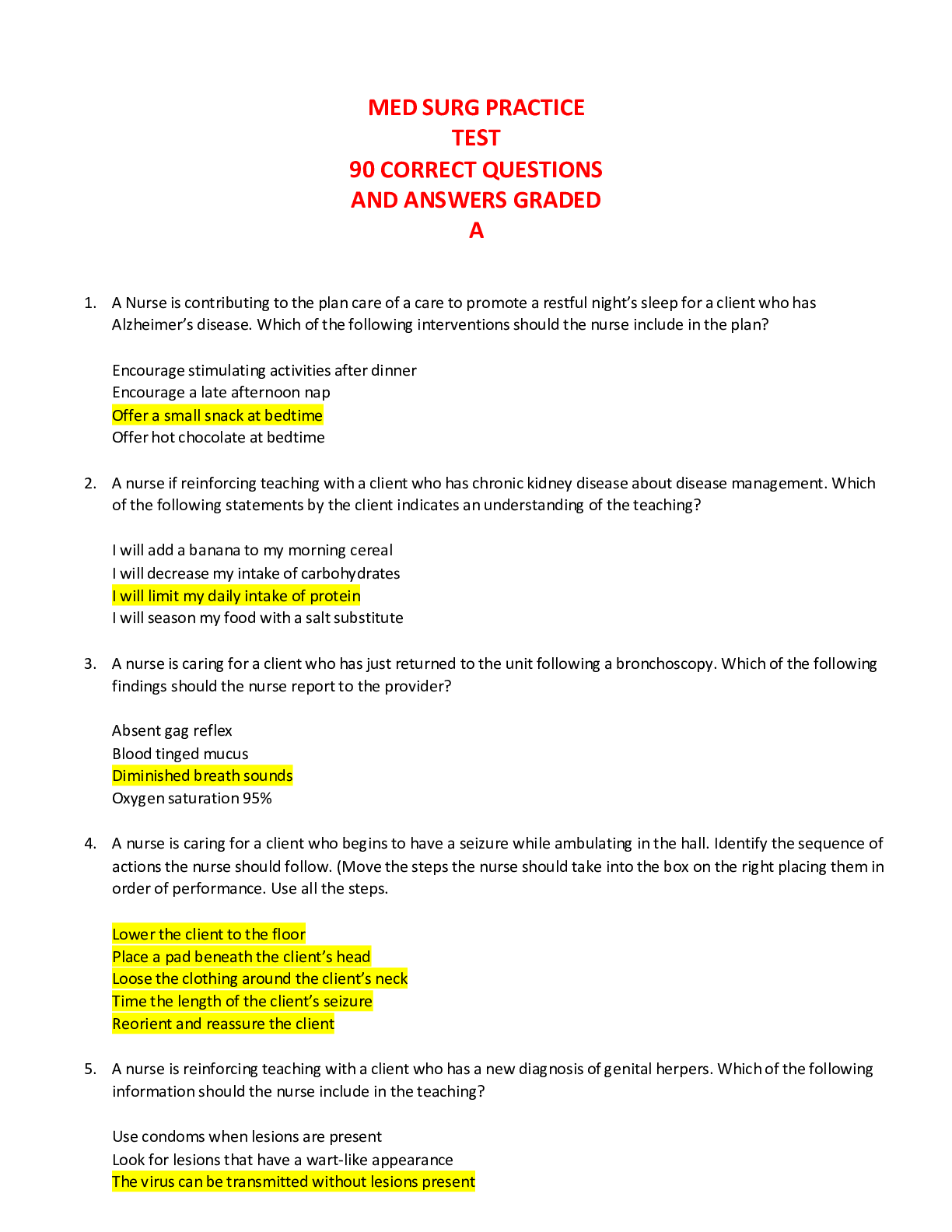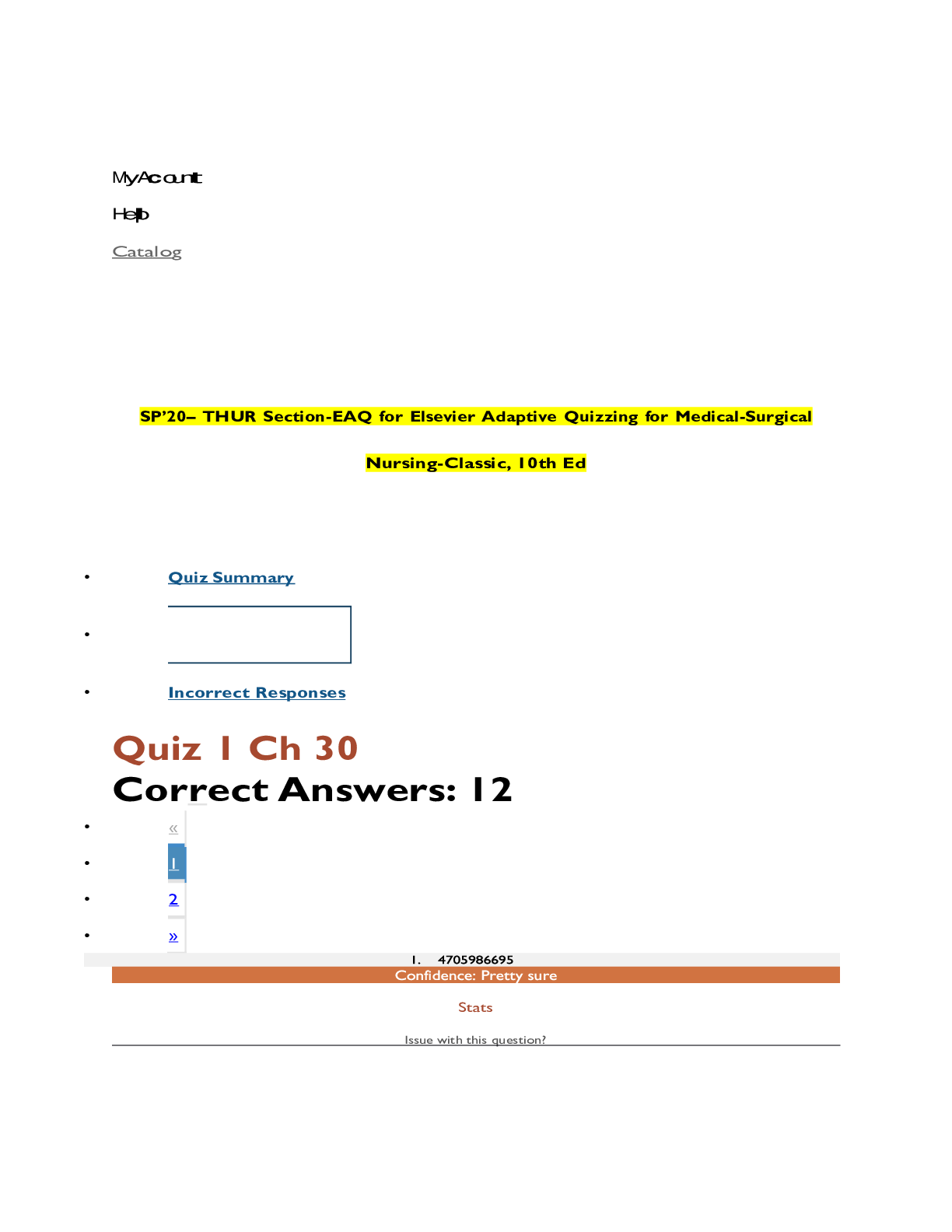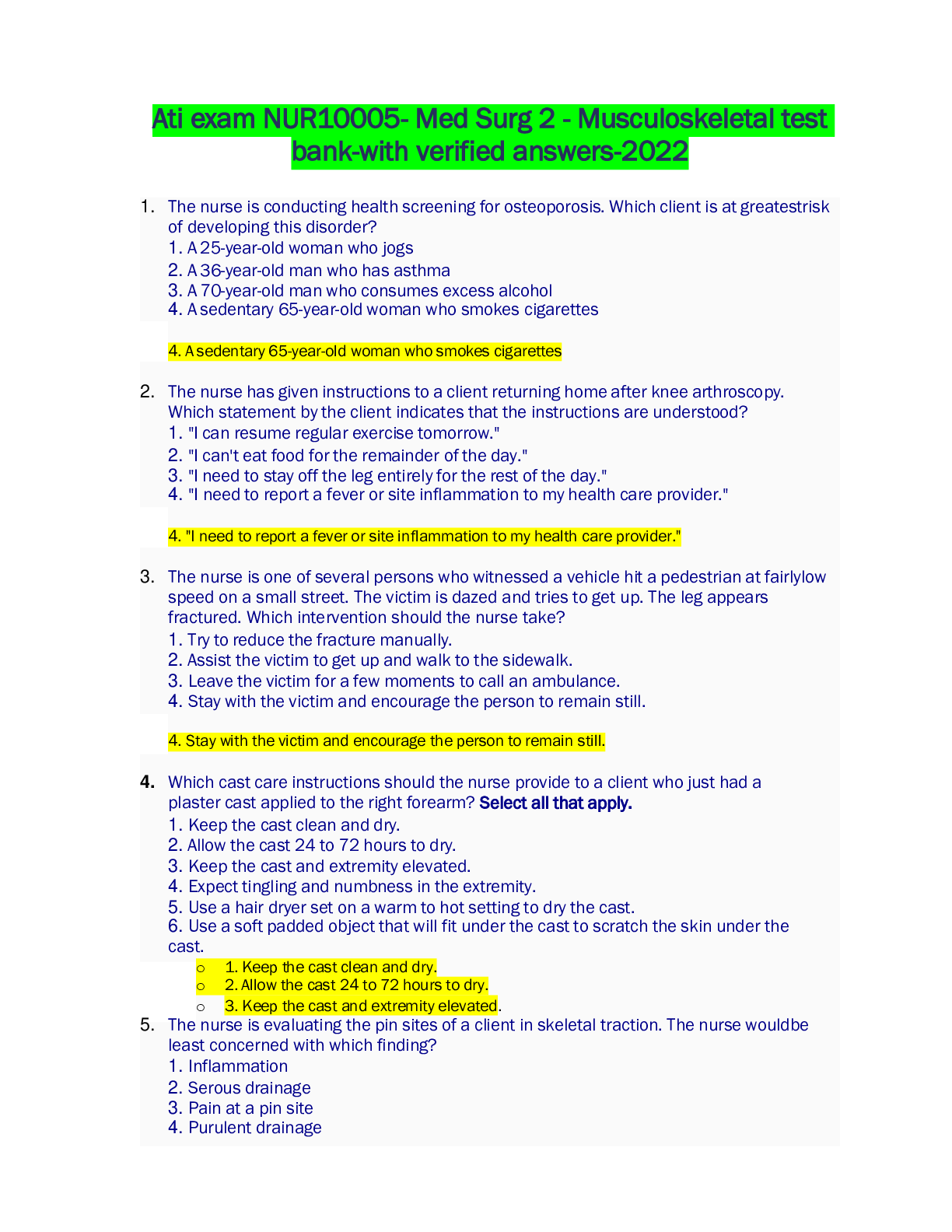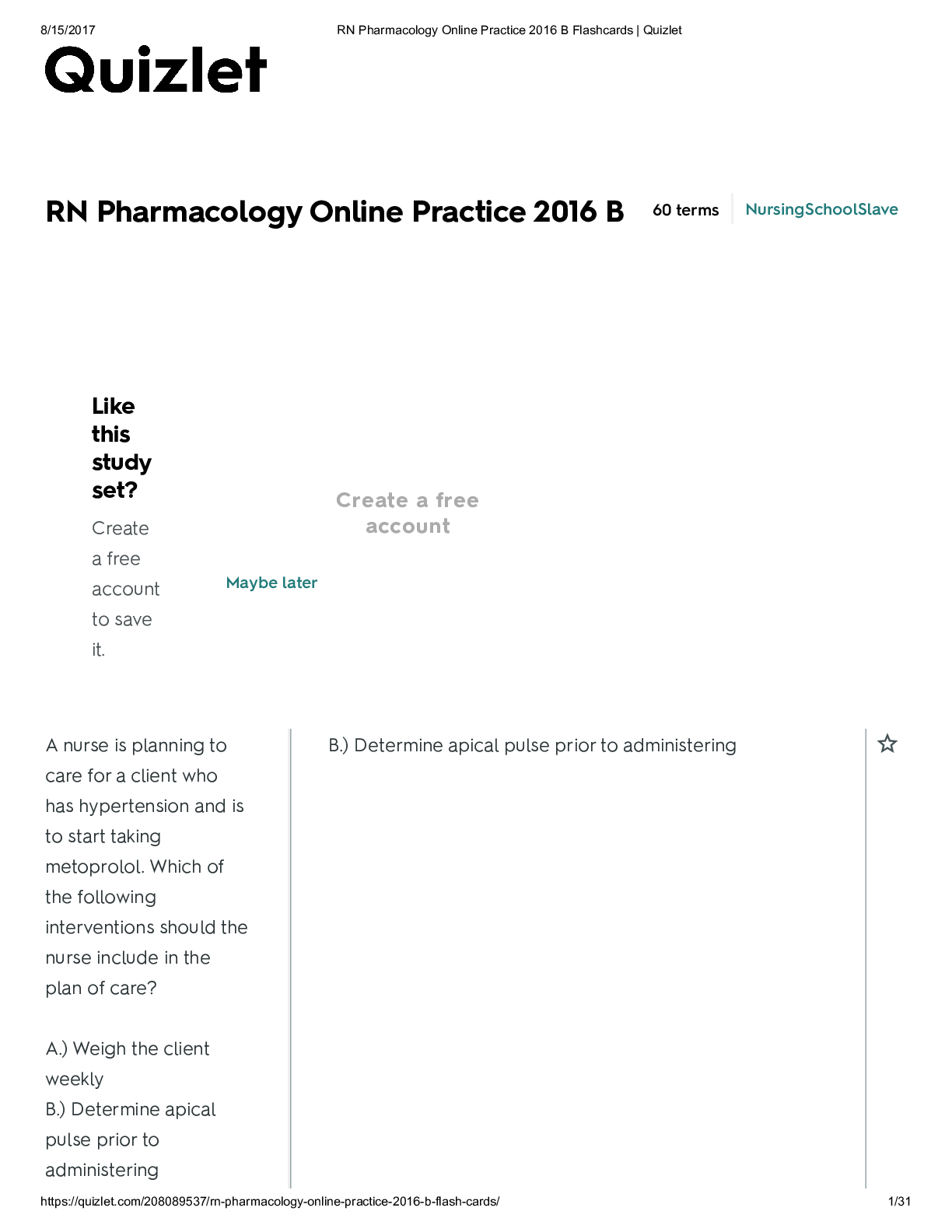*NURSING > MED-SURG EXAM > Infection ATI Notes for MEDSURG PN 105 *download to get A* (All)
Infection ATI Notes for MEDSURG PN 105 *download to get A*
Document Content and Description Below
Infection ATI Notes Types of Organisms • Bacteria shapes o Round: cocci o Rod: bacilli • Cell wall surrounding bacteria o Gram-positive: thin ▪ Staphylococcus, streptococcus, diphther... ia, listeria o Gram-negative: thick ▪ Neisseria meningitides, neisseria gonorrhea, Escherichia coli, salmonella Types of Organisms: Mycobacterium • Waxy cell wall (hard to kill) • Most common mycobacterium • Tuberculosis Types of Organisms: Viruses • Invade cells of host (intracellular parasites) • Reproduce inside cell • Efforts to kill viruses tend to kill host cells • New drugs target virus-specific process • Antibiotics ineffective • Types of Organisms: Fungi • Plant-like organisms • Live in damp, dark places • "Eat" dead tissue • May infect through opportunistic opening in skin • Common skin infections are: o Tinea pedis (athletes foot) o Tinea corporis (ringworm) • Antibiotics ineffective • Types of Organisms: Parasites • Live in blood cells, organs, structures (intestines, vagina) • Malaria: travels to liver o Proliferates, infects red blood cells • Helminths: worms in intestines • Trichomonas: reproductive tracts Types of Organisms: Aerobic and Anaerobic Aerobic • Require oxygen to survive • Mouth, gastrointestinal tract, and lungs • Staphylococcus aureus (skin infections) and Pseudomonas aeruginosa (lung disease) Anaerobic • Do not require oxygen to survive • Produces abscesses and tissue necrosis Clostridium perfringens (gangrene) and Actinomyces (abdominal/pelvic infections) Types of Antibiotics • Bactericidal o Kills bacteria directly o Weaken cell wall (lysis) o Bind to ribosomes, decrease protein synthesis o Interfere with enzymes o Eventually destroys all bacteri • Bacteriostatic o Kills bacteria indirectly o Bind to ribosomes, decrease protein synthesis o Decrease number of bacteria o Body’s immune system kills remaining bacteria • Antibiotics fall under two categories: Broad and narrow spectrum o Broad spectrum ▪ Effective against a broad range of bacteria ▪ Exerts action on a structure that has similar characteristics between several different types of bacteria o Narrow spectrum o Effective against a narrow range of bacteria o Exerts action on a characteristic that is specific to only one or a few types of bacteria. Sensitivity and Resistance Sensitivity • Determine type of bacteria. • Obtain sample; view under microscope. • Sample can be blood, urine, exudate from wound • If it can’t be identified, they will Grow a sample over 24 to 48 hr. • Expose to various antibiotics. Resistance • Grow in culture. • Expose to various antibiotics. • Broad-spectrum antibiotics create ........................................................continued.................................................................................. [Show More]
Last updated: 2 years ago
Preview 1 out of 54 pages
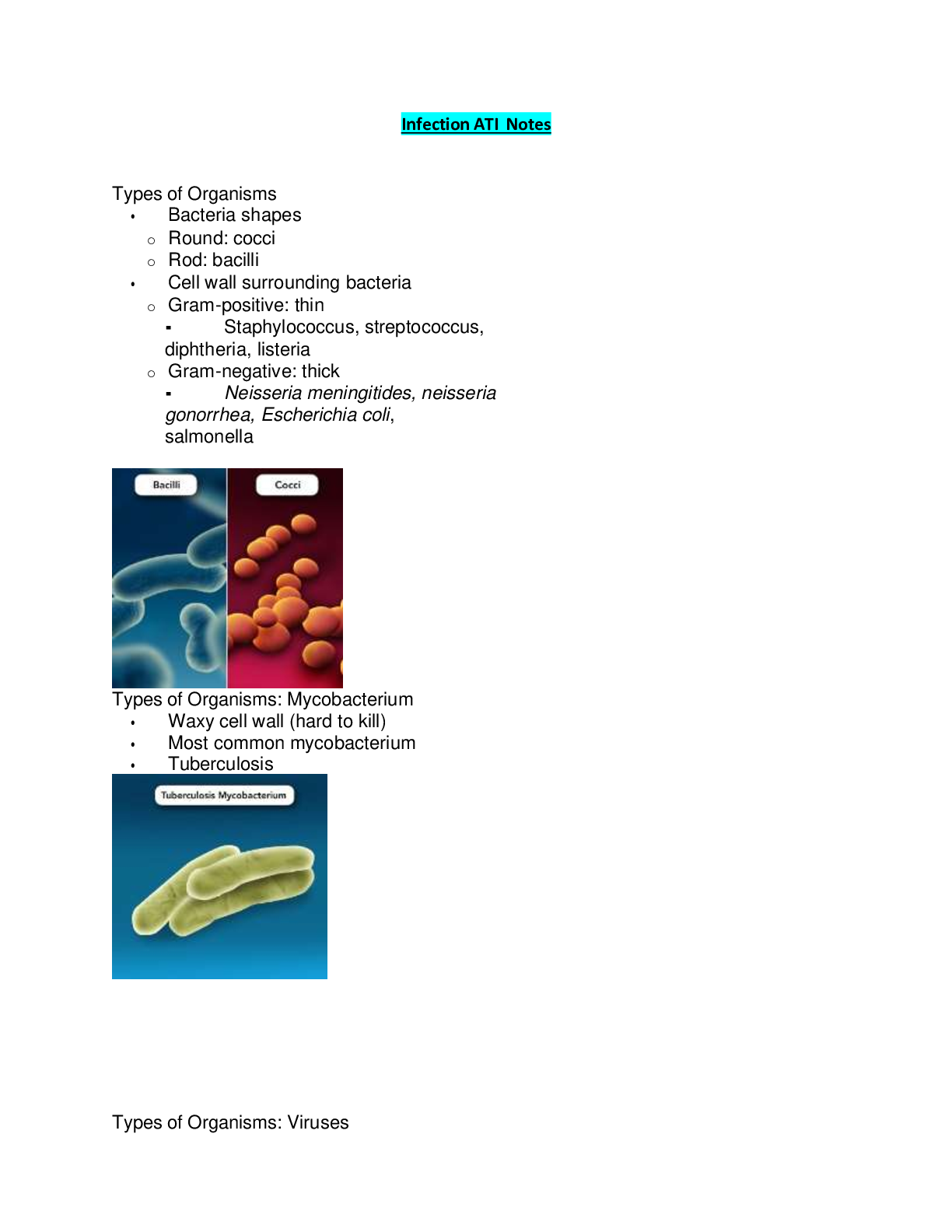
Buy this document to get the full access instantly
Instant Download Access after purchase
Buy NowInstant download
We Accept:

Reviews( 0 )
$13.50
Can't find what you want? Try our AI powered Search
Document information
Connected school, study & course
About the document
Uploaded On
May 14, 2021
Number of pages
54
Written in
Additional information
This document has been written for:
Uploaded
May 14, 2021
Downloads
0
Views
110



